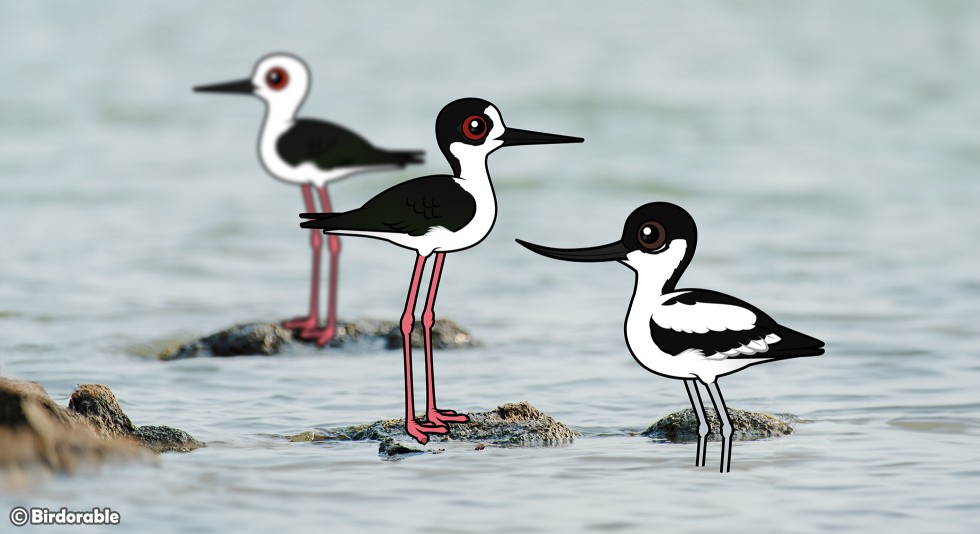Avocet & Stilt Week
Introduction to Avocet & Stilt Week: Amazing Adaptations

Stilts and Avocets are the only birds in the family Recurvirostridae. We'll be highlighting them on the Birdorable blog this week. Since Recurvirostridae Week is a mouthful, we're calling it Avocet & Stilt Week.
These fascinating wading birds are often found in wetlands, marshes, and shallow water bodies worldwide, where their specialized adaptations allow them to thrive. Let's look at some of the amazing traits that make these wading birds unique.
One of the most striking features of avocets & stilts is their long, slender legs. These birds are built for wading, and their legs are perfect for navigating shallow waters in search of food. The long legs allow them to move easily through different depths without getting their bodies wet, giving them access to a variety of feeding grounds. Whether they’re in salt marshes, mudflats, or freshwater wetlands, their legs enable them to forage efficiently and avoid potential predators by staying in deeper waters that might deter other species.
Another distinctive trait of Recurvirostridae birds is their long, thin bills, which are upturned in avocets. This specialized bill shape is key to their unique feeding techniques. Avocets use a sweeping motion to catch small invertebrates in the water. They swing their bills from side to side while walking through shallow water, a method known as scything. This technique is highly effective in stirring up tiny creatures from the soft substrate, making them easy prey. Stilts use their straight bills to probe into the mud or sand, hunting for insects, small crustaceans, and other invertebrates.
These birds are also known for their social behavior, particularly during the breeding season. Many stilt and avocet species nest in colonies, which provides several advantages. Group nesting allows for better protection against predators, as there are more eyes to spot danger and more individuals to mob intruders. Both parents are typically involved in duties, taking turns incubating eggs and watching over the nest, ensuring that their offspring are well-protected and cared for. This cooperative breeding strategy increases the chances of survival for the chicks.
Another remarkable adaptation of these birds is their migratory behavior. Several species within the Recurvirostridae family are long-distance migrants, traveling thousands of miles between their breeding and wintering grounds. For example, some Black-winged Stilt breed in southern Europe, Asia, and Africa but may migrate to the Middle East, South Asia, or sub-Saharan Africa during the winter. This ability to travel long distances is essential for survival, allowing them to exploit seasonal food resources and avoid harsh weather conditions.
In addition to their physical adaptations, avocets and stilts have also developed a variety of vocalizations and displays to communicate with each other. These can range from alarm calls that alert the group to danger, to complex courtship displays that involve synchronized movements and calls to attract mates. Their vocal repertoire is an important aspect of their social structure, helping them maintain group cohesion and coordinate activities.
Recurvirostridae birds are a prime example of how evolution shapes species to fit their environments. Their long legs, specialized bills, keen eyesight, social behaviors, and migratory habits all contribute to their success as a family. By understanding these adaptations, we can appreciate the intricate balance of nature that allows these birds to thrive in diverse and often challenging habitats.
Join us this week as we discover more about this family of birds, and reveal a few new birds to join our Birdorable Recurvirostridae family!





Comments
Leave a comment
Thank you!